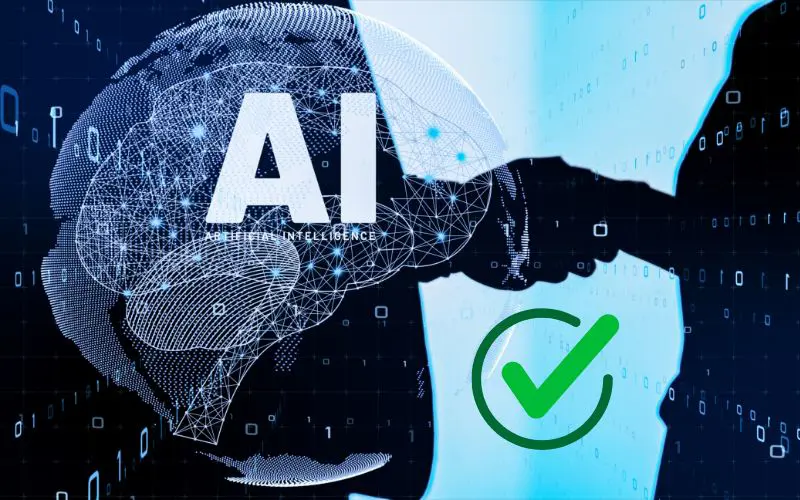How Does AI Image Generation Work?
How Does AI Image Generation Work?
AI image generation is a groundbreaking technology that has rapidly evolved, transforming the way we perceive and create visual content. AI image generation relies on training neural networks with massive amounts of image and text data. This process teaches the AI to associate words with visual elements. When given a new text prompt, the model generates an image that closely matches the described content. Essentially, it's like teaching a computer to "see" and "understand" images based on textual information, allowing it to create entirely new visual representations.
What is an AI-Generated Image?
An AI-generated image is a visual representation created by an artificial intelligence algorithm. The visuals are produced through complex mathematical processes that analyze large amounts of data. The range of these images can span from lifelike depictions of objects and scenes to abstract art pieces or creative concepts.
How Does AI Train to Generate Images from Text?
Generating images from text requires a complex and resource-intensive AI training process. To accomplish this, you need to train the model with a vast collection of images and their corresponding textual descriptions. The model uses machine learning to establish connections between certain words and phrases and visual elements. Gradually, the model acquires a comprehensive understanding of converting textual information into visual representations.
Are AI Images Replicas of Original Images?
Although AI models are trained using extensive datasets of preexisting images, the resulting output is not merely a copy of these source images. Instead, the model learns underlying patterns and structures within the data, allowing it to create new and unique images that share similarities with the training set but are not exact copies. It's akin to learning the rules of painting and then creating an entirely original artwork inspired by those rules.
Ethical and Moral Concerns About AI-Generated Images
The rapid advancement of AI image generation has raised ethical and moral concerns. One of the primary issues is the potential for deepfakes, which are AI-generated images or videos that convincingly portray real people in fabricated situations. This technology can be misused for malicious purposes, such as spreading misinformation or creating harmful content. Additionally, there are concerns about copyright infringement, as AI models are trained on vast datasets that may include copyrighted material.
Advantages of AI-Generated Images
Despite the challenges, AI image generation offers numerous advantages. They expedite content creation significantly, reducing the time and resources traditionally invested in photography, illustration, or design. AI drives creativity and innovation by providing an unending array of unique visuals that can be customized to individual preferences. Furthermore, these images can be tailored to specific audiences, enhancing engagement and personalization. The ability to overcome geographical and physical limitations is another key benefit, as AI can generate images of places or objects that are inaccessible or nonexistent. Moreover, AI-generated images can be used to address ethical concerns by providing alternative representations that avoid stereotypes or harmful biases present in traditional image datasets. Ultimately, this technology democratizes image creation, making it accessible to a wider range of individuals and industries.
OK to Use AI Images Scenarios
AI-generated images offer a versatile toolkit for a multitude of applications. In the realm of content creation, they can serve as a catalyst for visual storytelling, providing unique and captivating imagery for social media, blogs, and marketing campaigns. Moreover, they can be instrumental in accelerating design processes, offering designers a foundation for experimentation and iteration. AI-generated images also hold promise in education, providing dynamic and engaging visual aids to enhance learning experiences. Additionally, they can be employed in scientific research to visualize complex data or simulate hypothetical scenarios. In the entertainment industry, they can contribute to concept art, special effects, and game development, pushing the boundaries of creative expression.
Essentially, AI image generation empowers users to explore uncharted visual territories, inspiring innovation and efficiency across various domains.

Not OK to Use AI Images Scenarios
While AI-generated images offer many benefits, it's essential to use them responsibly. The misuse of AI image generation can have severe consequences. Creating and disseminating deepfakes, or highly realistic but fabricated images, can be used to spread misinformation, damage reputations, or even incite violence. Additionally, using AI to generate images that exploit or harm individuals or groups is strictly unethical. Moreover, copyright infringement is a significant concern, as AI models are trained on vast datasets that may include copyrighted material. Finally, relying solely on AI-generated images without human oversight can lead to the perpetuation of biases present in the training data, resulting in discriminatory or harmful outputs.
The Future of Designers/Photographers and AI Images
The emergence of AI image generation has sparked debates about the future of designers and photographers. However, it's more likely that AI will become a tool to enhance creative work rather than replace it. Designers and photographers can use AI to automate repetitive tasks, generate new ideas, and experiment with different styles. For example, AI can be used to remove unwanted elements from a photograph, create variations of a design, or generate different color palettes. Ultimately, human creativity and judgment will remain essential for producing high-quality visual content.
By understanding the capabilities and limitations of AI image generation, we can harness its potential while mitigating its risks. As the technology continues to evolve, it is crucial to foster responsible development and use to ensure its benefits are maximized for society as a whole.
